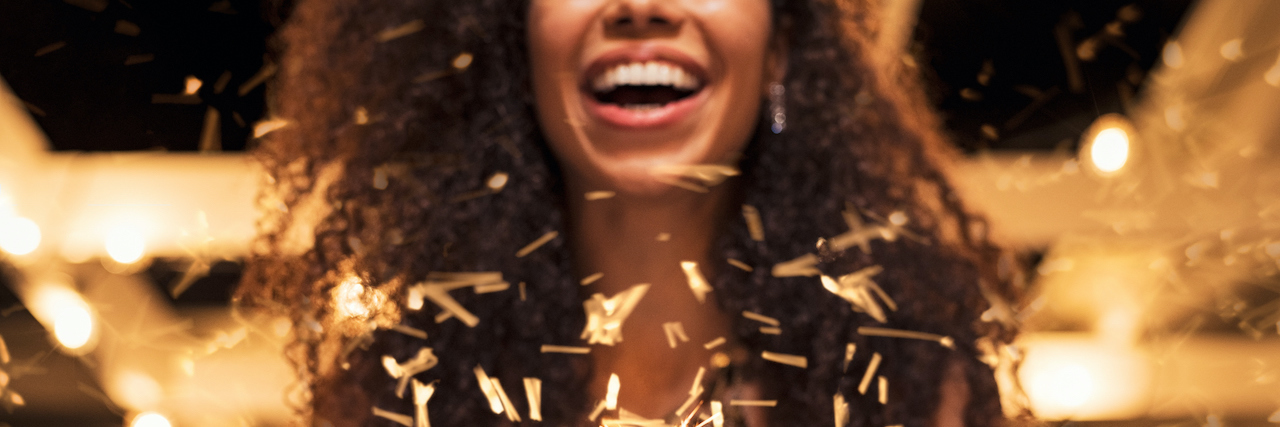What Is Currently in My BPD Toolkit for Surviving Dark Days
I don’t always thrive. Some days, my task is to “get through” the day, to survive. And….I will survive. I do survive. Those of us who live with mental health challenges, or challenges of any kind, know that there are days when we do not thrive, but yet, we survive. We make it though. We wake up and we keep breathing when our mind, or bodies or others around us, tell us we can’t. Yet, we make it through the day anyway, we survive. We do our best to cope with the unique set of circumstances of our day; it doesn’t feel great, and we survive the day regardless of how we feel and the obstacles faced.
A doctor years ago told me she believed that every one of her mental health patients required a different toolkit for coping and recovery. Patients choose what tools work for them. My toolkit in the past looks different than it does now. For example, images, distraction activities, helpful objects, reminders and medication could be part of a toolkit for someone. For someone else their kit may be entirely different. Some tools in my kit held a greater importance in the past then presently, but I still require a toolkit.
There are days when I need frequent access to some tools to survive, and other days when I seem to require them less or rely on one or two tools. But every day my kit is important no matter how often it is used.
My tools help me to ride the waves of emotions, remind myself of skills and the importance of being self-compassionate while feeling pain, but not acting on it in harmful ways.
Dr. Pat Deegan, psychologist and someone who lives with mental illness, defines recovery as this: “The goal of the recovery process is not to become normal. The goal is to embrace our human vocation of becoming more deeply, more fully human. The goal is not normalization. The goal is to become the unique, awesome, never to be repeated human being that we are called to be.”
I embrace a definition of recovery as Dr. Deegan so perfectly says that is not normalizing. The goal is to embrace my uniqueness, my awesomeness and remember that no one can replace me, and no one can replace you! We are all unique and I believe we all matter, we matter all days, including dark days when we are just trying to survive.
Part of my growth in recovery has been in recognizing my vulnerabilities and greeting myself with compassion and using tools on days when the darkness feels ever present. I have learned that for me, many of my triggers are interpersonal. I have also learned that factors such as sleep, physical illness, excess noise and visual stimuli in the environment as well as lack of routine can contribute to me being more vulnerable to intense painful emotions and harmful urges. When these things happen and are out of my control, it is helpful to remind myself of my need to access tools. I may not thrive, and I will survive.
“Recovery is an attitude, a way of approaching the day and facing the challenges. Being in recovery means recognizing limitations in order to see the limitless possibilities.”
– Pat Deegan.
I used to think recovery meant not needing tools to survive, but now I see it as Pat Deegan says: recognizing limits to see what is possible, and a way of facing challenges.
Life can be hard. I often have to remind myself to be gentle and patient when I am struggling. I have recently called my own toolkit: “My Armor of Lights,” and it includes the following “Lights” to shine in my life to survive when having a dark day.
Light 1: An image of an orchid: This is a reminder that I am both fragile and beautiful, that I require a certain type of care and compassion to grow, and that I can also create this environment for myself in ways such as limiting stimulation, rest and adequate nutrition and sleep. The orchid is reminder of a need I have for care, gentleness, compassion and love for my sensitivity.
Light 2: lavender oil, fuzzy eye cover, rock, music, recordings. I use these “lights” to ground me to the present by hearing the song or recording of a helpful short poem, focus on a pleasant smell, reducing visual environment with the eye covers if needed, and the rock to hold and feel in the present as a symbol of strength.
Light 3: A pocket-size journal with written affirmations, reminders of peace, strength and love. This recently includes a simple activity called: Self blessing.
Self blessing is defined as the practice of recognizing oneself as a valuable. Self-Blessing is an exercise on self-compassion, loving-kindness (Karenina Ana Murillo, author, yoga teacher, anthropologist).
To remind myself to engage in this practice for a moment, I repeat the phrase “self blessing” to myself five times when using Light 3.
Light 4: I visualize a “light” of safety, care and warmth around me, and then I engage in a simple kinesthetic practice of “putting the light on,” as if clothing myself in loving protective light.
These are a few of my “lights” I use to feel safe and survive dark days. I see toolkits as evolving and as open to change as we face different challenges, learn more about ourselves and develop new skills within our own unique recovery journeys.
I may not thrive on rainy dark days, but I will survive. As it rains and lightning tries to strike, I walk forward. I remember, I have a toolkit, my armor of “lights.” I use the tools, I clothe myself in hope, strength, warm and compassionate light. I will survive, and I believe you can too.
Getty image by Ridofranz

